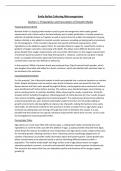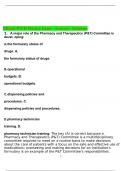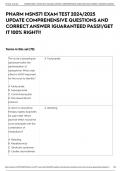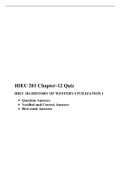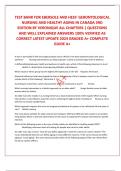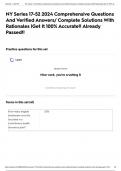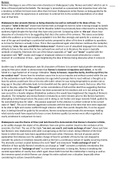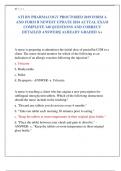Emily Bullas Culturing Microorganisms
Section 1: Preparation and Inoculation of Growth Media
Preparing Nutrient Broth
Nutrient broth is a liquid growth medium used to grow microorganisms with simple growth
requirements and is often used in the food industry and in water purification. It usually contains a
selection of peptides known as Tryptone as well as meat extract to enable microorganisms to grow.
Sodium chloride is also added to maintain osmotic pressure, providing an ideal growth environment
for microorganisms. If the microbe to be grown has special nutritional requirements, other
ingredients can be added to support them, for examples blood or sugars (1). Liquid broth creates a
gradient of oxygen saturation, decreasing with depth, this allows many different bacteria to be
grown despite their oxygen requirements and can provide information on the oxygen requirements
of unknown bacteria, based on how deep their growth is. However, colonies do not grow in liquid
broth, so valuable information observed from bacterial colonies cannot be observed and
contamination may be more difficult to detect (2).
In this practical, 200ml of nutrient broth was produced from 2.6g of nutrient broth powder, which
was weighed accurately and added to a duran container, which was labelled with autoclave tape to
be sterilised in the autoclave.
Inoculating Nutrient Broth
For this practical, 1ml of bacterial sample in broth was pipetted into a universal container or nutrient
broth. Aseptic technique must be used so open broth containers were not moved far from the
Bunsen burner and their necks passed through the flame, sterile pipettes were used and all surfaces
were disinfected with Virkon before starting. The surfaces were disinfected again once finishing, as
well as washing hands, to maintain biosafety. When observing the results a week later, the broth
showed uniform turbidity throughout, indicating growth of motile bacteria (2). Peer results showed
more intense turbidity, suggesting more bacterial growth. The method used proved to be effective
as bacterial growth was seen, however potentially needed more than 1ml of sample adding or
growth environments altering slightly to improve rate of growth, making the bacteria more easily
observable. An alternative method for this practical is to take a sample from an agar plate using a
sterilised inoculating loop and moving it through the broth to distribute the sample. It is also
possible that this bacterium has special nutritional requirements which were not met, so this could
be investigated to improve growth further.
Pouring Agar Plates
Agar plates are round trays filled with nutrient agar, a solid growth media containing the same
ingredients as nutrient broth, but with the addition of agar, a polysaccharide extracted from algae,
which allows the mixture to solidify at room temperature (3). Agar plates create a large surface area
for microbial growth, allowing colonies to form. Observing colony morphology (appearance of
colonies of bacteria) can provide useful information about the bacteria grown. Colony growth also
allows contaminants to be observed easily as well as identifying different bacteria within a
population. The shallow media depth and large surface area of agar plates means no oxygen
saturation gradient is present, so aerobic and anaerobic bacteria cannot be grown simultaneously.
This structure also means that they can dehydrate quickly and therefore will no longer support
growth (4).
, In this practical, molten agar nutrient mixture was poured into Petri-dishes, then allowed to cool.
The lid of the Petri-dish was left covering the agar but not closed, to allow evaporation whilst
preventing contamination. To further prevent contamination, the agar was poured within close
proximity to the Bunsen burner, the neck of the agar nutrient container was passed through the
flame before pouring and all work surfaces were disinfected using Virkon before starting. There was
no biosafety risk during this practical as no microbes were used.
In another practical, liquid agar was prepared from powder, by weighing out the correct mass
needed to produce 10 plates, 4.6g, and labelling the container using autoclave tape before being
sterilised in the autoclave.
Preparing a Streak Plate
Streak plating is a technique used to grow individual bacterial colonies on a solid growth medium.
The streak plate method involves using an inoculating loop in a back-and-forth, ‘tornado’ pattern
shown in figure 1 below, to produce a gradient from high-density growth to individual, isolated
colonies, seen in figure 2. This technique is often used for clinical samples, to identify the bacteria
causing an infection (4). However, this method can be difficult to perform correctly and may not
produce isolated colonies if so, fortunately it uses small amounts of bacterial sample and can
therefore be repeated multiple times if necessary.
In this practical, a sample of E. Coli bacteria was collected using an inoculating loop and applied to
the plate using the technique seen in figure 1. One mistake made during this practical was not
sterilising the inoculating loop between each streaking, resulting in quite dense growth throughout.
Some individual colonies were produced however the plate contained mostly streaks of dense
growth, drawings of these can be seen in the lab book. Aseptic technique was essential during this
practical to prevent contamination of the plates, so surfaces were disinfected with Virkon before
starting and inoculating loop and bacterial sample bottle were passed through the flame. The bench
was disinfected again once finishing, as well as washing hands to maintain biosafety.
Figure 1: Streak Plate Technique (6) Figure 2: Streak Plate Result (7)

